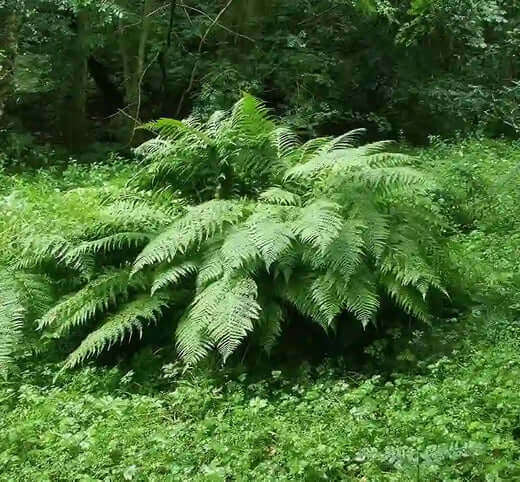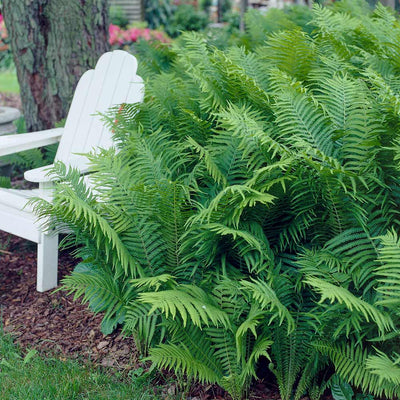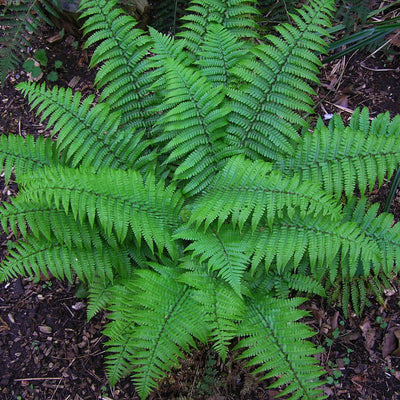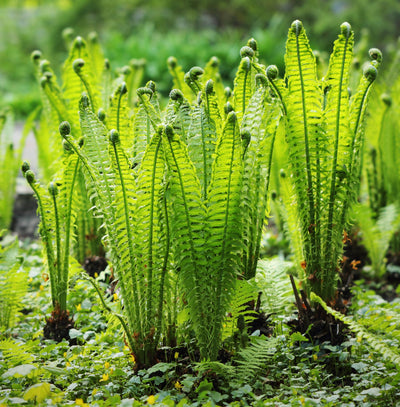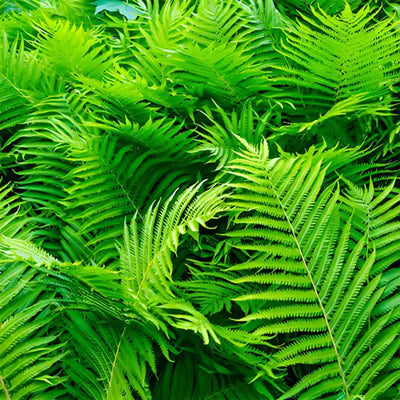Keeping Your Ferns Healthy
Do you want to keep your ferns vibrant and healthy? Are you interested in learning how to keep ferns healthy and thriving year-round? Changing a few things can lead to healthier and more resilient ferns you can enjoy for a long time.
In this article, we'll cover ten critical fern care tips on how to look after your plants so they will remain beautiful and productive over the long term. We will also discuss some ferns that will grow best in your garden. Keep reading if you want help with keeping those greens happy.
Ferns are among the oldest, most varied, and most famous kinds of plant. Alongside their stunning visual appeal, there is an array of care. Like humans, ferns have some commonalities but differ in their treatment.
Instead of flowers that produce fertilizer and then develop into seeds, most fern species reproduce by spores that can be observed on the leaf's underside. The spores could travel for hundreds of miles through air circulation — an essential process in propagating ferns naturally!
Find a great indoor spot.
The abundance of run-off water in kitchens and bathrooms can be great indoor spots for ferns. For other areas, you could include a humidifier or humidified moss around the bottom of the plants. Indoor fern care also involves ensuring that ferns are kept away from windows facing west or south and keeping them away from vents and fans to stop them from drying out. Maintaining proper fern humidity needs is key to their lush green growth.
Shade.
The majority of ferns thrive in full or dappled light. The adequate shade will yield lush dark green leaves. Based on the location, we suggest 70% to 65 percent shade. (Less might be needed during winter when daylight hours are less.)
The sun's rays on the tops of the leaves, stiff, upright, and green growth are all signs of the excessive sun. If any of those happen, you should add shade. Some ferns, like the Ostrich fern, can thrive in full sunlight if sufficient water is available to stop drying out.
Moisture levels
While it's a little trickier, it involves managing both the growing medium and the watering method—most ferns like the soil to be moist but not saturated with water or dry. When preparing a well-drained medium composed of bark, perlite, and peat moss, the objective is to ensure the same amount of aeration and moisture retention between every watering. Monitoring fern humidity needs helps maintain the perfect growing balance.
Hardiness zone.
Verify the zone of the fern, and ensure it is in the same area as the plant is sold.
Be cautious when weeding.
Because ferns usually have small roots, you have to be extra cautious when you are weeding the ferns. It is vital in the early spring when fiddleheads (young frills of ferns) emerge.
Winter Habit.
Many perennial ferns - also called hardy ferns to lose their foliage during winter months, but they will reseed after the start of spring. They can be cleaned and stripped of slow growth once the foliage has died and grows back. It is possible to mound the ferns over the crown.
Light
Most ferns prefer a shaded spot; however, they could perform better in intense shade. The dark shade created by tree branches provides ideal conditions. Look at how they grow in the forest, then look for similar conditions for your yard.
Ferns can tolerate some direct sunlight. However, the more sun they experience, the more moisture they'll require. Only a handful of fern species, such as the Ostrich Fern, can tolerate hot, dry, and sunny areas.
Potting and Repotting
If you are considering using ferns for your house plants, choose a tropical species. Instead of regular pots, ferns flourish in deeper soil, such as a commercial mix for ferns or compost mixed with peat and sand. Repotting is required as the plant starts to crowd its pot and may result in smaller leaves. Successful propagating ferns ensures your collection grows year after year.
Be aware of possible pest indicators.
Not many diseases or pests affect ferns but identifying them is essential. The most common fern pests are not selective caterpillars and Fungus gnats. Be aware of moths in your greenhouse and use bug zappers to lure them before laying eggs. The presence of gnats in the greenhouse often indicates that the fern is getting too wet, and watering should be decreased.
Fertilization.
They are light feeders in comparison to other leafy plants. They are suitable for using a balanced fertilizer like 20-10-20 or 20-20-20. They also require micronutrients of around 200 ppm of nitrogen. Over-application of nitrogen can irritate the leaves and roots if the plant gets dry. Proper fertilizing ferns helps them stay lush and strong throughout the seasons.
The ferns of tropical regions are more sensitive to fertilizer residues on the fronds after a liquid feed. They may react to as low as 200 ppm nitrogen, so carefully do not fertilize the plant too much.
Christmas Fern
TheChristmas fern receives its name due to its perennial green color, which remains unapologetically green after most plants enter winter dormancy. These ferns' leaves are dark and light green. The fern's heads are green and are covered with silvery white scales that let loose when opened.
It is easy to care for Christmas ferns
However, they require careful attention. Here are a few basic guidelines to make them thrive:
They thrive in the frigid temperatures of USDA Zones 3-9 in the USDA Hardiness Program. Still, freezing winters or hot early springs in these zones could harm the evergreen trees' lifespan.
They can flourish under the full sun; however, partial shade or sunlight is better. Too much sun exposure could adversely affect the Christmas ferns in your garden. When they develop, their leaves provide plenty of shading and cover for other flowers and plants in the garden.
A well-drained, moist soil is a big help to these plants. Mulch can boost their growth. Pine needles, dried leaves, compost, or any other material that helps add nutrients to your soil can also improve the overall health of your soil.
Fiddlehead Fern
Like all ferns, the fiddlehead is a good choice in shaded places. If you pick the perfect spot for your fern's home, it will need minimal care, except for occasional watering on hot or dry days.
Fiddlehead fern features feathery fronds as well as a lengthy, strenuous Rhizome. The fronds open in a length that ranges from 4 to 5 feet and is covered with numerous leaflets.
Fertile fronds are light brown and extend nearly to the ground. Furthermore, fertile fronds are more noticeable and develop further; they have a gorgeous green hue and can persist into winter in areas of moderate growth. The distinctive leaf shape is among its unique characteristics and is what gives it its unusual name.
Bracken Fern
The bracken fern is identified by its triangular fronds. They show leaflets that develop in pairs. Bracken is a common fern that thrives on all soils, even rocky or sandy. It can endure for many decades. The fern is a perennial plant that is reborn annually with incredible reliability, even after forest fires, flooding, or other natural disasters.
As the fern develops, it creates the foundation of a deep, dense root network that helps it reproduce throughout the year. The deep roots also make them resistant to strong winds and heavy rainfalls.
FAQs
How do I keep my ferns healthy?
To keep ferns healthy, give them indirect light, keep the soil moist, and maintain the humidity high. To keep your leaves from burning or your roots from rotting, don't let them get too much sun or water.
Do ferns like sun or shade?
Ferns do best in partial to full shade. Too much light can burn the fronds, while too much shade can limit their growth.
How do you propagate ferns?
You can grow ferns from spores or by splitting off older plants. It's simplest to grow ferns in the spring when they start to grow new leaves.
Can ferns grow indoors?
Yes! Ferns may grow well inside your home if you give them the right care, such keeping the air damp, letting in filtered light, and watering them often.
What is the best fertilizer for ferns?
Once a month, use a balanced liquid fertilizer (20-10-20 or 20-20-20) at half intensity. Don't give too much fertilizer, because it can hurt the roots.
